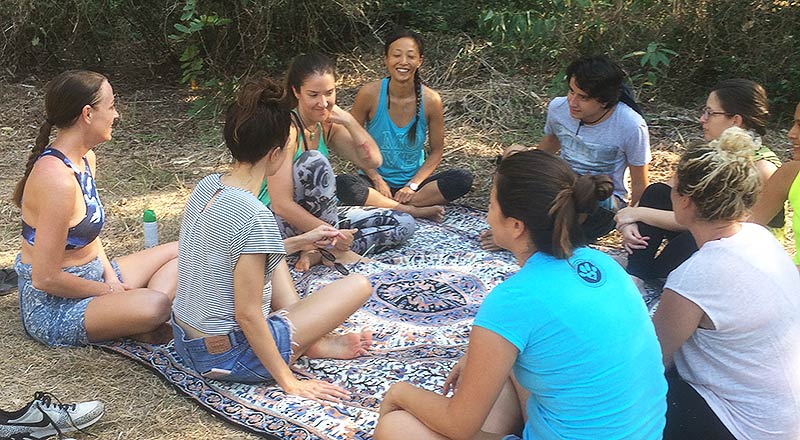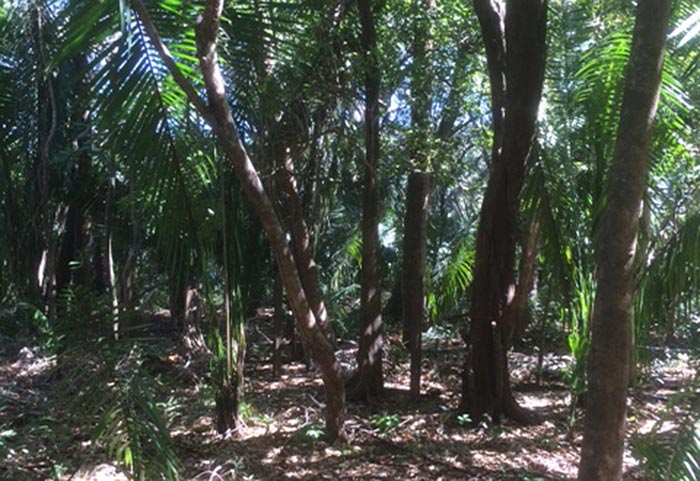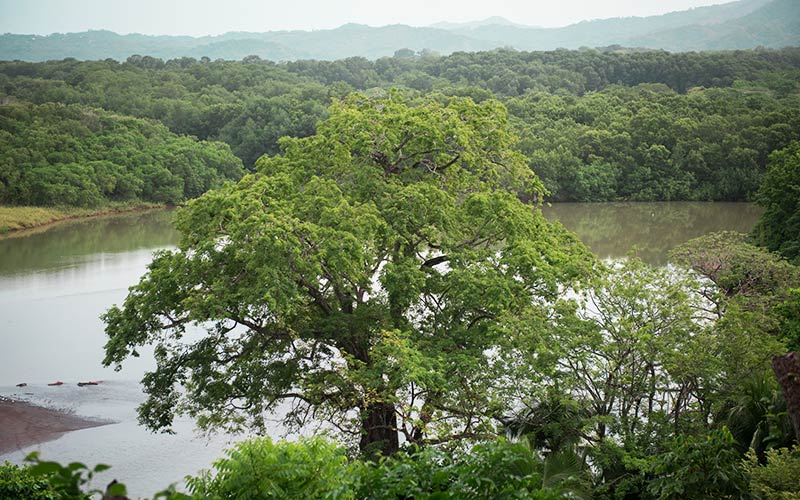Tuesday, February 7, marked the beginning of a series of guided walks along the Senderos de Nosara. These walks, part of the new GreenZones project, will feature naturalists pointing out key elements of our ecosystem, walks designed for kids, and guided meditation walks.
Koko Niwa from the Harmony Healing Center led the first meditative walk on Tuesday. She began with an explanation of mindful meditation followed by a quiet hour exploring the trail, taking photographs, and sharing the results with others on the journey. You’ll look at the trails, and perhaps at your photographs, from a different perspective after just an hour in Koko’s company. Meet at the Harmony Healing Center Tuesdays at 3:30 pm, followed by a short walk to the trail. You don’t need hiking shoes, but do bring a camera or smartphone. The best part: these walks are free.
What is GreenZonesNosara? It’s a project aiming to document our native forests through photography. You’re invited to participate in a number of ways. Watch for more information in upcoming FB posts, and visit www.greenzonesnosara.com.



Carbon Credits in the Biological Corridor
NCA is proud to be a part of the Nosara River Biological Corridor, that is “a geographically defined area which provides connectivity between landscapes, ecosystems and habitats, natural or modified, and ensures the maintenance of biodiversity and ecological and evolutionary processes” according to the Central American Commission for Environment and Development.
The Nosara Biological Corridor has four components:
- Implementing a Geographic Information System as a tool for decision-making
- Strengthening community rural tourism initiatives
- Supporting private conservation initiatives (such as the NCA)
- Developing a territorial action plan
In parallel with these efforts, NCA actively encourages owners of protected areas or areas in regeneration to participate in the international carbon market. At the end of 2016 NCA began to establish 25 permanent plots for carbon monitoring in 18 of its parklands. On January 27, volunteers from the Universidad Nacional delivered the final report on establishing a carbon baseline. Among other findings, the baseline shows that the 70 hectares included in this project have 4,875 metric tons of carbon, the equivalent of 17,785 metric tons of carbon dioxide. With the first annual measurement against this baseline, scheduled for November, NCA will be able to negotiate payment for carbon offsets with companies or individuals interested in carbon neutrality as their corporate social and environmental responsibility.

